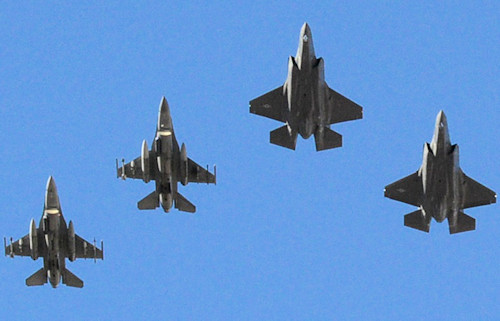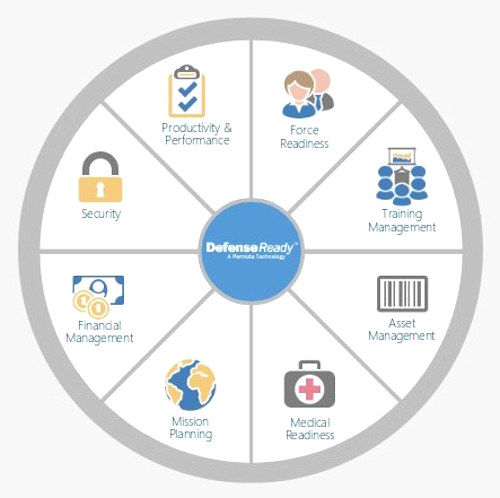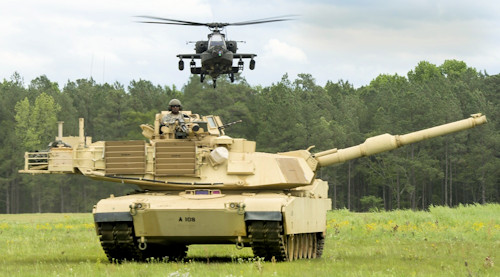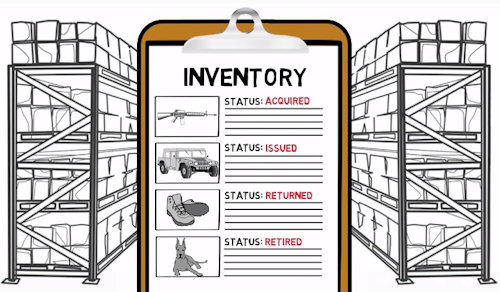It is known that the Defense of the United States of America has for years a good relationship with Microsoft, the multinational IT company based in Redmond.
The union between the IT skills and the expertise of a group of former American soldiers, their knowledge of the internal processes of the departments and of Microsoft products, gave birth to a small but efficient IT company called "Permuta Technologies", with headquarters in Washington DC It is one of his products that I intend to talk about today.
DefenseReady it is a defined software commercial off-the-shelf (COTS) or available on the market for ready use, created for the purpose of offering general vision and control, at a managerial and functional level, over a military organization.
Let's clarify immediately that it is not a new product but, on the contrary, well established. The first version came out in 2008, and five more have been released since then.
The update takes place approximately every six months with the release of new features or improvements to existing ones. Furthermore, the patch safety.
Being a software for military organizations, particular importance has been given to the security aspects. In fact, it was created following the guidelines of secure software development, which provides for the application of safety requirements in each of the implementation phases of the solution.
Naturally the security of DefenseReady, as well as on the general provisions of the environment and the basic Operating System also relies on the security features of the platform on which it is based, in particular on the Microsoft Dynamics platform, a product that combines the potential of an ERP (management software for planning of the resources of a company) with those of a CRM, that is a software for managing relations with customers.
The Microsoft Dynamics platform is compliant with the security standards ISO 27001, ISO27018 and SOC 1 Type 2 as well as the new European regulation on data protection (GDPR) which, officially, will come into force on May 25th. It is periodically updated to respond to the increasingly stringent security measures. In particular, the security model on which Microsoft Dynamics CRM is based helps protect data integrity and privacy while supporting efficient data access and collaboration modes. The security model is in fact based on some simple paradigms:
In particular, the security model on which Microsoft Dynamics CRM is based helps protect data integrity and privacy while supporting efficient data access and collaboration modes. The security model is in fact based on some simple paradigms:
- allow users of the system to access only the information necessary to carry out their activities;
- categorizing users based on the role and restricting access according to the same principle;
- supporting data sharing based on specific access permissions to non-owned records when necessary for a specific collaboration;
- prevent a user from accessing records that are not proprietary or that are not eligible for sharing.
Microsoft and Trade-In make it known that their product is used in the DoD field. The data can be easily confirmed: it is possible to conduct a quick investigation using the OSINT discipline. We are immediately helped by the tendency of recent years to make public data on public expenditure and it is sufficient to consult the site GovTribe to have visibility on contracts made by governmental structures in favor of the company permuta and understand with a simple glance that the software is in use at least at:
- the US Special Operations Command;
- the Department of the Air Force;
- other US defense agencies not better specified.
But now let's go into detail and see what areas of a military organization are covered by software.
To do this I use the material available on their site and I start with a very explanatory pie chart. As you can see, the eight areas of interest are covered by the same number of modules:
As you can see, the eight areas of interest are covered by the same number of modules:
- strength and operational readiness;
- training;
- materials management;
- health;
- mission planning;
- financial management;
- safety;
- productivity and performance.
The first "Force Readiness" area is designed to provide the Commander and his staff with the following information:
- management of military, civil and external personnel;
- reporting on strength and organizational planning;
- position of staff and responsibility;
- In and Out processing;
- evaluations and rewards;
- work groups;
- recruitment;
- military passports;
- military and civil education, certifications
- payments, licenses and service orders and so on. This is probably the most important area.
Proper management of personnel and strength allows targeted use and, ultimately, greater efficiency of the organization as a whole. Every organization, military or otherwise, requires a staff management module. The present module is built on the basis of the DoD internal processes and simplifies the work of the personnel administrator by automatically providing all the statistics and the so-called "periodicals" required, made directly available to the upper body.
 One of the most interesting areas in my opinion is the one concerning the operational planning of the missions.
One of the most interesting areas in my opinion is the one concerning the operational planning of the missions.
This area allows you to manage and create operational documentation for military, civil and military personnel contractors employed in an operation. It allows to carry out the correct management, in compliance with American standards, of the forces already sent to the TO and to plan the deployment of new forces. It allows you to compare the mission needs and the resources available in terms of personnel and materials.
The module facilitates the planning of movements related to an operation, the tracking of relevant information related to a task force (position, available forces, support requests ...).
Finally, of great importance, it allows the tracking and verification of the achievement of the objectives and related projects.
Of course the processes studied and the forms are the classic American DoD and if the software were to be adopted by a non-American military organization need some adaptation, but it seems that it is relatively simple and fast thanks to the methodology used for software design and for its realization.

DefenseReady it can be supported on a data warehouse, providing the intelligence necessary for the correct correlation, interpretation and visualization of the data of a military organization.
It is clear that the introduction of such a complex and rich software into an organization makes sense only if operational advantages are obtained. The commander of a military organization will be the first to take advantage of it as the use of DefenseReady promises to facilitate the achievement of a clear and correct vision of the organization as a whole, with particular reference to the situation of staff and available means. Likewise, the heads of the functional areas will benefit from the "Staff" to the "Materials", not to mention the "Operations": DefenseReady in fact it allows to plan military operations having been born, as already said, by the experience of former soldiers.
For further information, it is sufficient to contact Microsoft which, in partnership with the staff of Permuta Technologies, provides evidence of the functions described by means of an ad hoc presentation and demo based on your needs.
To learn more:
- https://federalnewsradio.com/federal-insights/2017/01/government-workfor...
- http://www.permuta.com/defenseready/
- https://dynamics.microsoft.com/en-us/;
- https://govtribe.com/vendor/permuta-technologies-inc-springfield-va-dba-...
- https://dynamics.microsoft.com/en-us/
- https://technet.microsoft.com/en-us/library/jj134930.aspx
- https://msdn.microsoft.com/library/gg309524(V = crm.6) .aspx
- https://www.microsoft.com/en-us/sdl/
- https://servicetrust.microsoft.com/ViewPage/TrustDocuments
(photo: US Air Force / US Army National Guard / Permuta Technologies)












